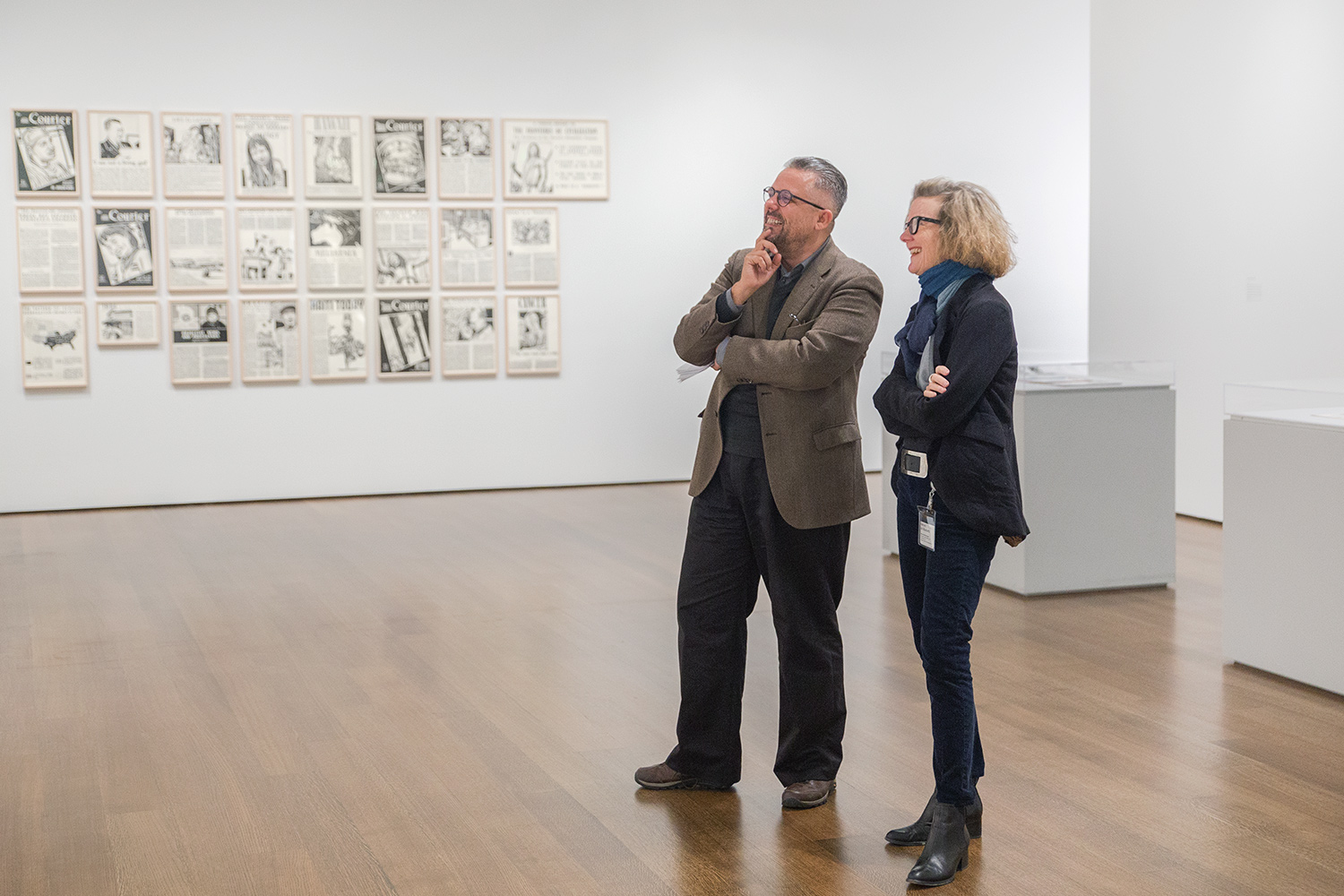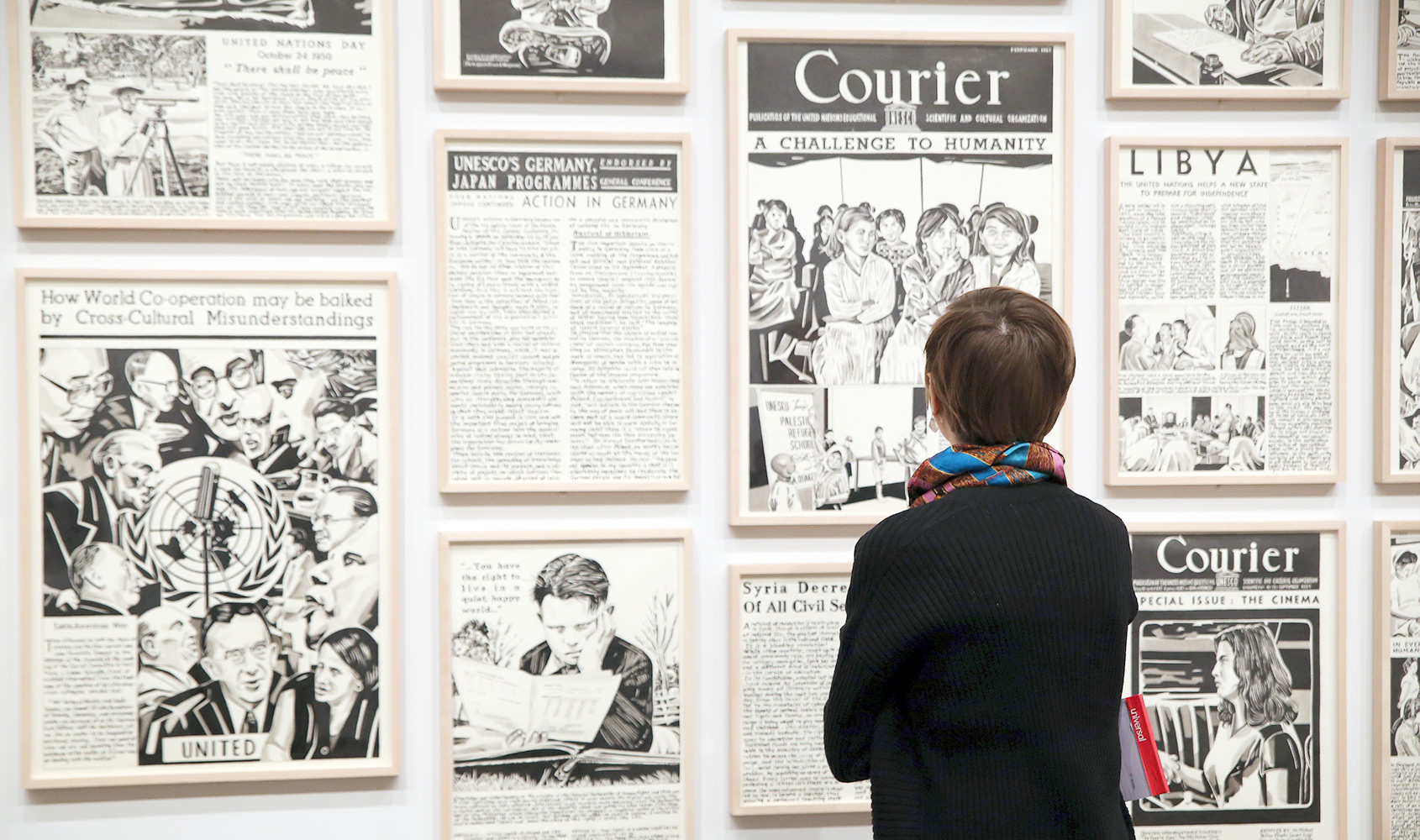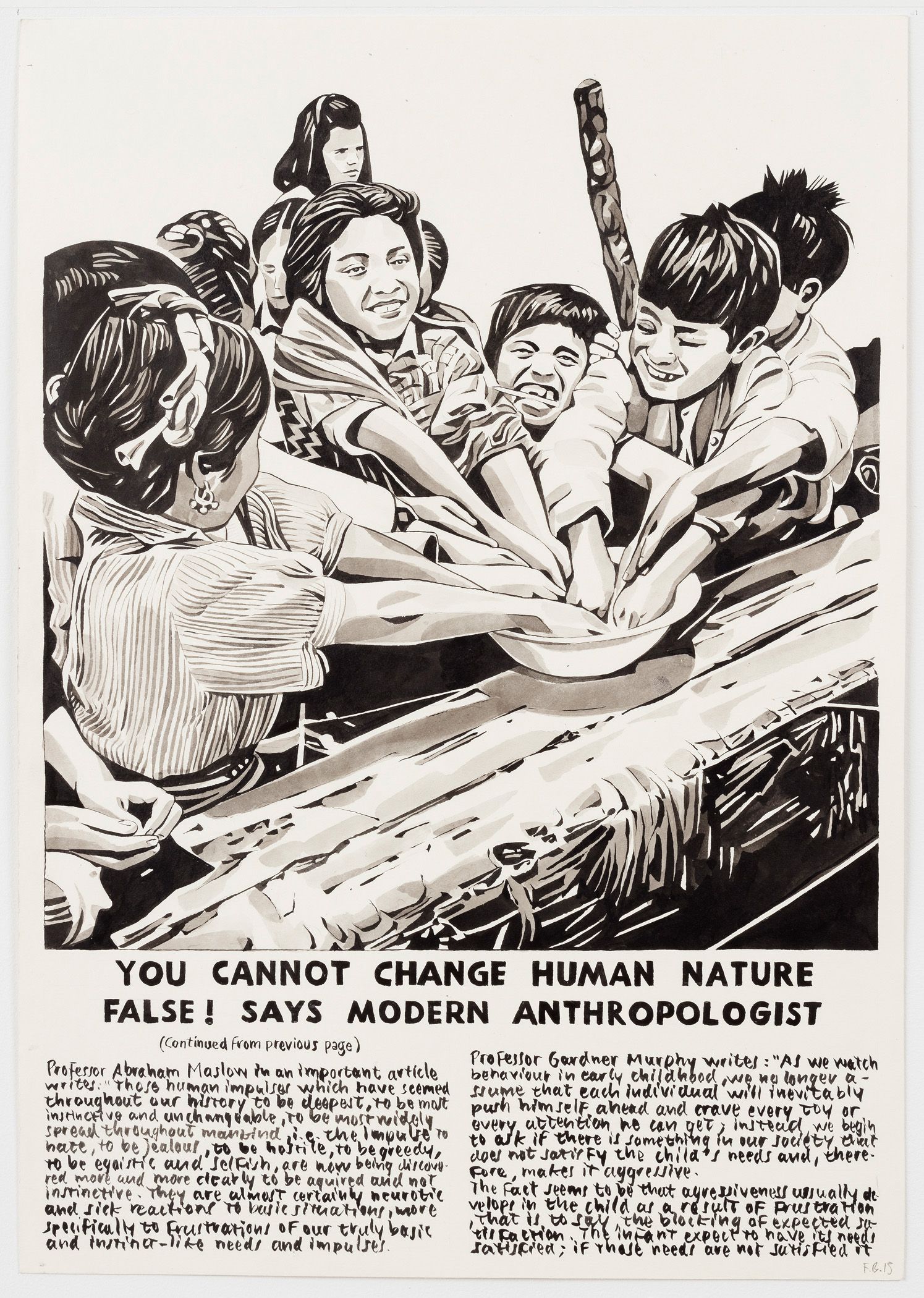Fernando Bryce isn’t interested in explaining history—he prefers to show it. The Peruvian-born artist calls himself a “para-historian” and has built a career around an extraordinary creative process he terms mimetic analysis.
Delving deeply into archives, Bryce discovers original, 20th-century historical materials with striking subject matter or imagery, such as newspaper and magazine covers, movie posters, and advertisements. He then re-creates these documents entirely by hand with ink on paper—but in the process often makes changes to the layout or size of various elements, in part to draw special attention to key images and themes.
“In the source, [original images and text] are condemned to be prisoners of the archives,” Bryce said during his recent lecture, “Drawing History and the Image as Memory,” at the Harvard Art Museums. “The document is part of the past, whereas the art is something new. The original is being put in relief and there is a sense of transformation.”
His 2015 installation The Book of Needs exemplifies this approach. On view in the spring of 2018 in the Harvard Art Museums’ University Research Gallery, the multipart work is comprised of 81 drawings that selectively reconstruct images and text from early issues of the UNESCO Courier. The international publication began in 1948 and addressed such pressing postwar issues as science, education, race, and international strife—topics that remain relevant even today.






